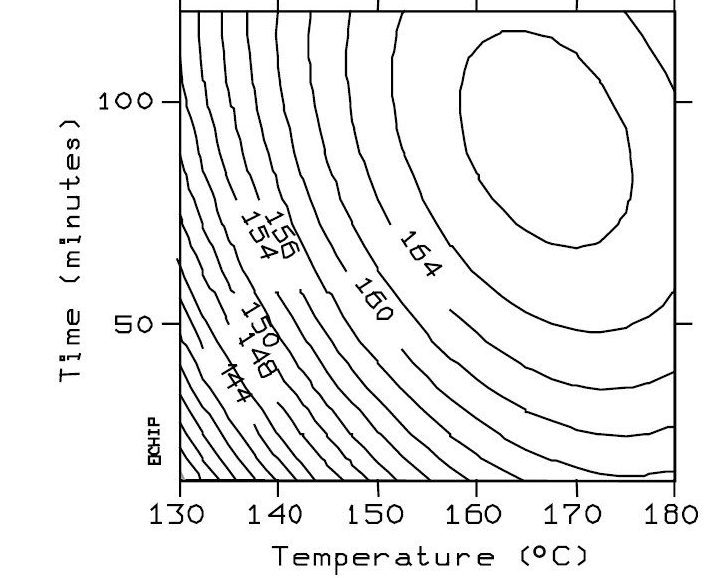In order to understand the shelf-life, expiration date, and product fitness for use it is important to understand the basics of epoxies and the mechanism through which they get hard (a process knowing as curing or cross-linking). The term “epoxy” is quite broad in scope and encompasses a wide range of technologies. With the exception of a specific group of epoxies that cure with themselves, all epoxies — and specifically epoxy molding compounds – cure through the mixing of two components: an epoxy resin and a hardener.
Depending on the resin/hardener combination used (and the number of combinations of resins and hardeners is truly staggering), the properties of the end product are different. One important property, particularly in the case of epoxy molding compounds is the Tg. The Tg or “glass transition temperature” of an epoxy molding compound is the temperature above which epoxy properties, specifically the coefficient of thermal expansion (CTE) and the dynamic modulus (E), change.
Low Tg materials require less heat to fully cure (in some cases this may even be ambient temperature) to obtain maximum material properties, but as a result, have a lower temperature at which these properties begin to degrade. High Tg materials on the other hand require a much higher temperature to fully cure, but then provide much high-temperature stability, meaning that their properties are much more stable to much higher temperatures.
Traditionally, formulating for a product that had a glass transition temperature in the range of 120C to 160C, allowed you to use resin/hardener combinations that gave the epoxy mold compound very good room temperature stability before it was processed, and then cured very quickly when molded at temperatures between 160°C and 180°C (typical molding temperatures).
In the past 15 years, applications for epoxy mold compounds have grown to include those that require temperature stability above 180°C, which required the development of epoxy molding compounds that had Tg’s above 180°C. The downside to this achievement is that materials with such a high Tg required curing temperatures much higher than 180°C to achieve maximum material properties.
Of course, epoxy mold compound users could either not expose their products to such high temperatures, or their equipment was not capable of molding above their traditional 180°C temperatures.
In order to accommodate for this discrepancy, epoxy mold compound manufacturers introduced curing catalysts to their formulations. These catalysts essentially allowed the curing to take place faster while achieving similar glass transition temperatures at lower molding conditions. If you have been following the story thus far, you will realize that it was the introduction of these catalysts, that on one hand allowed manufacturers to produce epoxy molding compounds with a higher Tg, but on the other allowed these compounds to be cured at lower molding temperatures. Figure 1 shows a contour plot that outlines the Tg development of a typical epoxy mold compound vs cure temperature.

This point is important to understand in the context of this article, specifically as it concerns epoxy molding compounds and “one-part” epoxies. Customers familiar with epoxy mold compounds often believe that this is a “one-part” epoxy as it is presented as a single, homogenous product, either in granular form or in a pressed pellet form.
In fact, most one-part epoxies, including epoxy molding compounds are a class of products that is “premixed and cooled”, meaning that they are mixed and manufactured ahead of time and delivered to customers after they have been mixed. The industry term for this condition is called B‑stage. Though I am not aware of the term’s origins, the term is used to describe epoxy systems that are beyond their “A‑Stage” (ie unmixed) and their C‑stage (ie completely cured).
In its B‑stage therefore, epoxies – by definition — are mixed but are not yet fully cured. Herein lies the crux of the issue. What happens to epoxies that have been fully mixed, but have not yet been exposed to the temperatures required to achieve maximum material properties? Specifically, as it relates to this article, how quickly does this reaction occur? What properties are affected prior to full cure and what are the effects of these property changes on the final material properties?
Please stay tuned for the next part in this series to explore the behavior of epoxy molding compounds.
Please visit us at www.caplinq.com to learn more about our whole range of epoxy molding compounds (EMC) including our semiconductor-grade epoxy mold compounds, fiberglass-reinforced industrial-grade mold compounds, and optically clear epoxy mold compounds (CMC) for emitters and detectors. If you have any other questions about how epoxy mold compounds cure, please feel free to leave a comment below, or don’t hesitate to contact us.



Giá nhựa EMC là bao nhiêu /kg
Please contact us for detailed price information